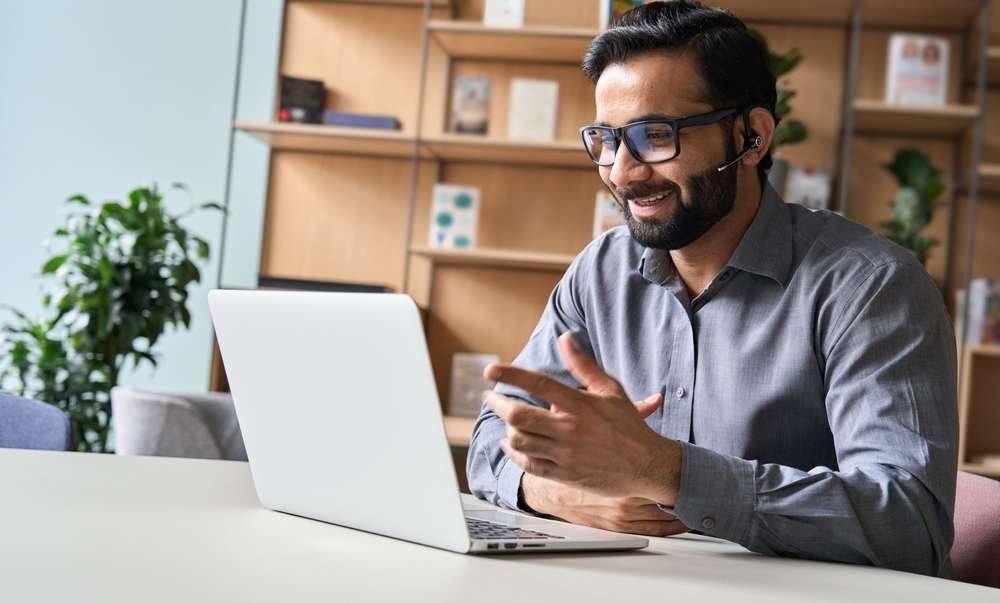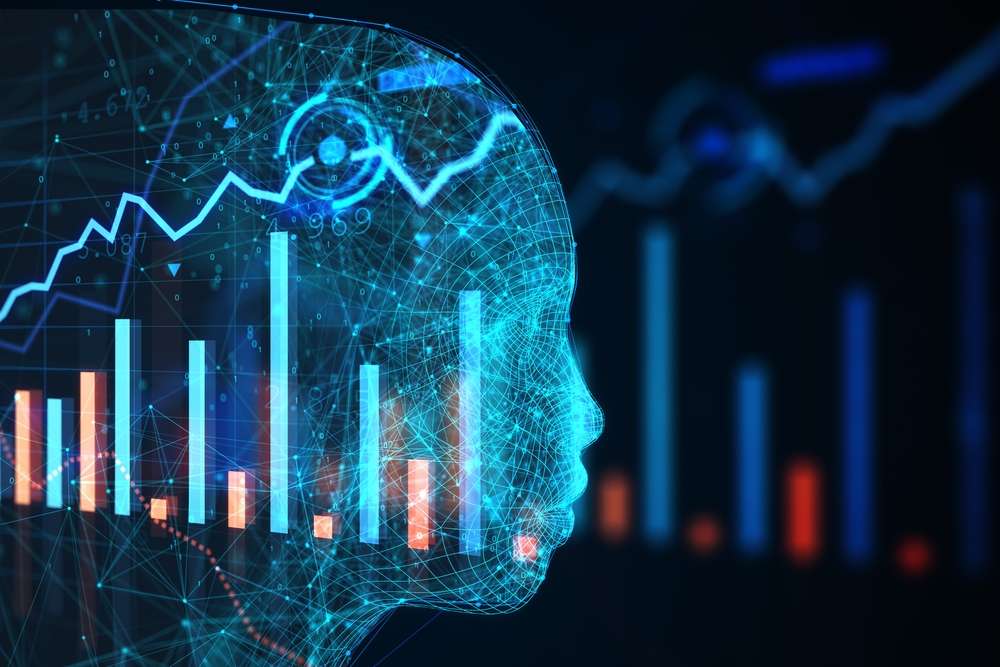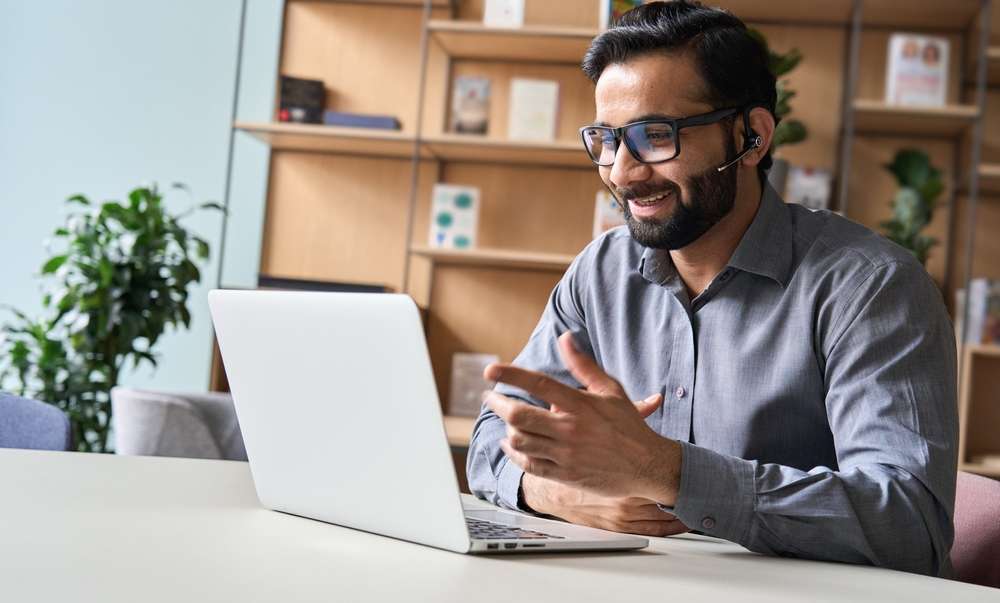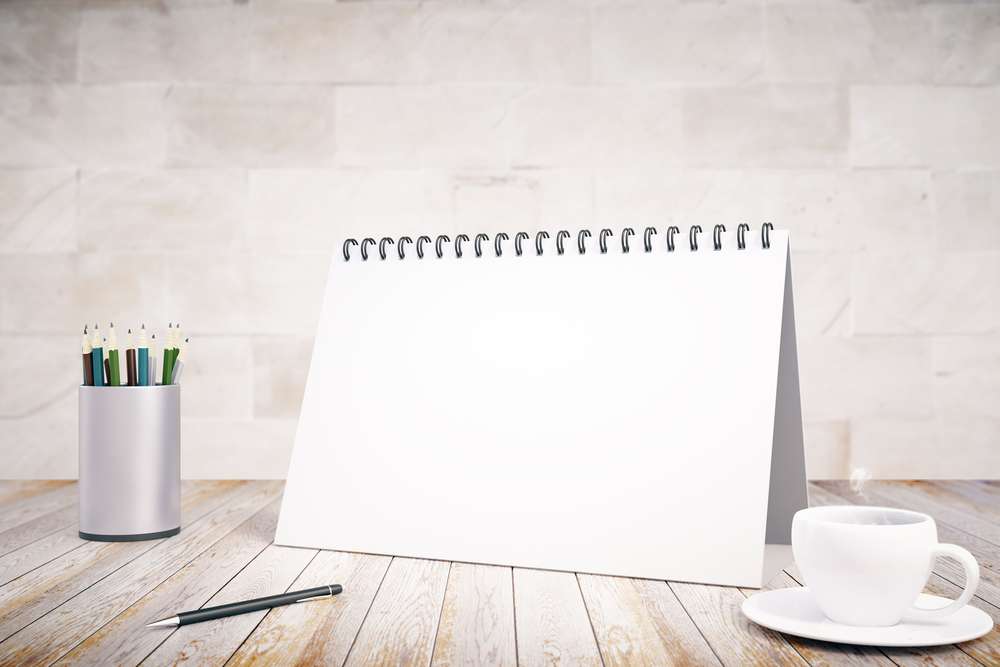
Introduction to Personal Learning Environments
Developing an effective Personal Learning Environment (PLE) is fundamental to fostering independent learning and lifelong educational development. It’s a concept that all learners should understand and leverage to gain the most out of their educational experiences.
In essence, a Personal Learning Environment is the sum of all the tools, technologies, communities, and educational sources that individuals manage throughout their independent learning process. It’s distinctive for every learner, reflecting their personal preferences, goals, needs, and the methods that work best for them.
Many tend to think of the learning environment as the traditional classroom setting. However, with the explosion of online learning and digital technologies, unconventional learning spaces have become increasingly prevalent. From libraries, home offices to coffee shops, and digital platforms like blogs, podcasts, and online libraries – the learning environment has expanded beyond physical boundaries. Consequently, learners now have a unique opportunity to personalize their spaces to perfectly match their learning needs.
The PLE is based on self-directed learning, a method where learners take initiatives in recognizing their learning needs, setting goals, identifying resources, implementing strategies, and evaluating outcomes. To utilize PLEs, learners are motivated to take an active role in their education. This learner-centered approach requires discipline, good management skills, and constant curiosity, fostering the necessary skills to adapt and thrive in any fast-paced career.
How one structures and develops their PLE has a significant impact on the efficiency of their learning. An organized workspace, reliable resources, and effective digital tools provide structure and reduce distractions. Engaging with learning communities, peer networks, and experts in the chosen field can provide valuable insights and resources. Further, recognizing personal learning styles and integrating corresponding learning strategies goes a long way to make the learning process enjoyable and effective.
The PLE is not a static entity but rather a dynamic structure that evolves over time. Technologies change, new resources emerge, personal circumstances and learning goals may shift. Therefore, maintaining a PLE requires regular assessment and adjustments to keep up with changing needs and opportunities.
Throughout this article, we will delve into strategies to set up a PLE, ways to tailor it to individual needs, methods to manage physical and digital elements, and tips for optimizing the use of the PLE for successful learning outcomes.
The importance of a Personal Learning Environment cannot be overstated. By enabling the learner to design and control their learning path, PLEs serve to make the educational process more engaging, comfortable, and successful. Invest time in cultivating a robust PLE; it is an invaluable asset in your lifelong learning journey.

Understanding Your Learning Style
Grasping your unique learning style is a pivotal aspect in creating an effective personal learning environment. Essentially, it is understanding how you absorb, process, comprehend and retain information best. By recognizing your preferred learning style, you can tailor your learning techniques to match, hence boosting your ability to learn and retain new information more effectively.
There are four generally recognized learning styles: visual, auditory, reading/writing, and kinesthetic.
Visual learners react best to information that they can see. They are drawn to visual stimuli such as images, infographics, diagrams, charts, videos, or any other graphic that represents information visually. If you’re a visual learner, consider incorporating more visual aids into your learning process like colour-coding, mind maps, or even doodling to help retain information.
Auditory learners learn best when they hear information. They benefit greatly from lectures, group discussions, audio recordings, and educational songs. If this is your preferred learning style, consider listening to podcasts or having a narrative running in the background while studying.
Reading/writing learners thrive when interacting with text. They prefer reading information and writing it down for themselves. This may involve techniques such as taking exhaustive notes, rewriting information in their own words, or summarizing complex topics. If you’re a reading-writing learner, try to transcribe the information in your own words or make use of flashcards for revision.
Lastly, kinesthetic learners need physical activity to better comprehend information. They are the hands-on learners who benefit from experiments, roleplaying, and any learning methods that involve physical activity. If you identify as a kinesthetic learner, try incorporating role-play, model making, or physical activity as part of your study routine.
One thing to remember is that these learning styles are not mutually exclusive. You can be a blend of two or more styles. The idea is to understand what works best for you and then translate that into your learning environment.
Assess your learning style through observations about how you prefer to take in information. Reflect on what methods have worked for you in the past. There are also plenty of online assessments available that can help determine your learning style.
Using your comprehension of your learning style, you can curate resources, strategize your approach, and decide the best modality of learning. Remember, there’s no right or wrong learning style. The end goal is to optimize your personal learning environment to your specific learning preferences, thus making it an effective platform for your educational success.

Organizing Your Space for Maximum Efficiency
Your environment plays a crucial role in facilitating effective learning. How your space is organized can significantly impact your focus, concentration, and ability to absorb information. It is therefore essential to be deliberate and thoughtful about creating a space that maximizes your learning potential. Here are strategies to make your space more conducive to learning:
First, minimize distractions. This could mean a clean, clutter-free desk or a quiet place where interruptions from people or noises are minimal. For physical clutter, consider using organizers or storage boxes to keep your study materials. For digital clutter, ensure your computer desktop is tidy, with files properly labeled and stored and unnecessary tabs or programs closed.
Also, think very critically about your choice of location. You might prefer a bedroom, a cafe, a library, or even a park. The critical thing is that it’s somewhere you can focus. Consider factors such as noise level, overall comfort, and availability of resources like power outlets or internet connectivity. Good lighting is also vital to reduce eye strain and fatigue.
The mood of your space also matters. If it’s a place you enjoy, you’ll be more likely to spend time there and be productive. Personalize your space in a way that makes you happy but also promotes concentration. Try using calming colors, putting up motivational quotes, or having indoor plants. A desk with enough room for your materials, a comfortable chair, good lighting, and a place to rest your eyes away from your screen can all contribute to a more favorable learning environment.
Additionally, consider incorporating elements that stimulate your senses in a positive way. For example, you could have a specific study scent using aromatherapy diffusers with fragrances like lavender, known for its calming effects, or peppermint and citrus for alertness. Some people also find that having soft background music or white noise, like nature sounds, can improve focus.
Make use of organization tools and apps, too. For example, having a physical or digital calendar can help you track assignment deadlines or important dates. Color coding can be beneficial for visual learners. To-do list apps, digital notebooks, or flashcard apps can all be used to help organize your studies.
Finally, practice cleanliness and orderliness at all times. After each study session, make it a habit to clean up your space and put things where they belong. This is not just about promoting a clean environment but also about training your discipline and consistency, which are crucial traits in effective learning.
Remember, there’s no one-size-fits-all when it comes to creating the perfect learning environment. What works for someone else may not work for you, and that is perfectly okay. The key is to experiment with different strategies and tweak them to suit your unique needs. By approachingly strategically, you’ll be able to cultivate a learning environment that fosters efficiency, productivity, and, most importantly, effective learning.

Utilizing Technology in Your Learning Environment
Technology plays an instrumental role in establishing an effective Personal Learning Environment (PLE). PLEs thrive on interactivity and connectivity, and technological tools are second to none in facilitating that.
One of the critical uses of technology in a personal learning environment is in the form of e-books, online courses, podcasts, and interactive videos. Accessing resources digitally can save time, and the interactive nature of digital content can provide a deeper understanding and a more engaging learning experience. Use resources like Khan Academy for a variety of subjects, Coursera for specialized courses, and even YouTube for countless educational videos.
A plethora of apps are tailored for learners, designed to enhance knowledge retention. For instance, flashcard apps, such as Anki, make memorizing facts easier. Coding apps like Encode offer practical skills in an engaging format. Language learning apps like Duolingo make language learning more accessible. Explore and find those which suit your needs the best.
Harnessing technology also means using it to stay organized. Tools like Google Calendar or Todoist can help schedule your learning time effectively, set reminders, and keep track of deadlines. Notion or Evernote can be your digital note-taking platforms, where you can store, organize, and quickly find your notes. Using cloud storage like Google Drive or Dropbox enables you to have access to your learning materials from anywhere.
Active participation in online communities can also enhance your PLE. Online forums like Reddit or Quora, or social media groups dedicated to your field of study, can offer valuable insights and knowledge that you might not come across otherwise. They foster interactive discussions where you can ask questions, share your understanding, and learn from peers worldwide.
What’s more, when dealing with complex topics, digital tools can offer different perspectives. For example, 3D modeling software can help visualize and better understand complex structures or models, whether for anatomy in biological sciences, or for engines in mechanical engineering.
Finally, never neglect the importance of digital breaks and maintaining your digital well-being. It’s easy to get carried away with endless information available at the click of a button. But it’s crucial to take regular breaks, maintain good posture, and ensure you’re not straining your eyes. Software like f.lux adjusts your screen’s color temperature according to the time of day, reducing the strain on your eyes during nighttime study.
Remember, the goal is to make technology serve you and not the other way around. Tailoring it to your specific needs can greatly complement your PLE. With the right mix of technology, you can take control of your learning, making it more engaging, efficient, and effective.

Setting Achievable Learning Goals
Everyone has goals they aspire to reach. In the context of a personal learning environment, these could range from mastering a new language to acquiring a new professional skill. Setting achievable learning goals can help streamline your study process, keep you motivated, and promote a sense of accomplishment.
First, it is crucial to have a clear idea of what you want to achieve. What is the end result you’re aiming for? This could be anything from passing a specific exam with flying colors, to being able to fluently converse in a foreign language. Once you’ve identified your primary learning goal, write it down. Physically writing down your goal helps solidify your commitment and keep your objective front and center.
With your end goal in sight, it’s time to break it down into smaller, manageable tasks, known as short-term or interim goals. These mini goals make the learning process less overwhelming and provide regular chances for celebration when achieved. If your end goal, for example, is to learn French, your mini goals could include learning vocabulary, understanding grammar rules, and becoming proficient in writing or speaking.
Having measurable goals is one crucial aspect of reaching success. This means that your goals must be quantifiable in some way. For example, instead of saying, “I want to be better at mathematics,” you can aim to solve ten math problems per day. It gives you a clear, measurable target to strive for.
Next, it’s essential to set realistic goals. While it’s great to be ambitious, you must also consider your strengths, weaknesses, availability, resources, and obligations outside the learning environment. For instance, setting a goal to master a semester’s worth of coursework in a single week might be pushing it, but spreading that same coursework over two months could possibly be viable.
A timeline comes in handy when setting goals. It gives you a clear expectation of when you should complete tasks and reach your end goal. Have a specific date for each task and adjust it as necessary.
Regularly review your goals to check if they are still aligned with your learning needs. You may find that you need to tweak some aspects along the way. This is completely fine. Your goals should be flexible enough to accommodate changes in your circumstances or in your learning focus.
Finally, bear in mind that setbacks are a part of the journey; they don’t mean failure. If you find that you’re consistently failing to meet your goals, don’t be too hard on yourself. It may simply mean that your goals are too ambitious and need to be scaled back a bit.
In a nutshell, setting achievable goals in your personal learning environment involves having clear objectives, breaking them down into manageable tasks, making them measurable, being realistic, having a timeline, and being flexible. Remember, the ultimate goal is to foster effective learning and personal growth, not to add more pressure to your life. Keep that in mind as you create and work towards your learning goals.

Incorporating Active and Passive Learning Techniques
Active and passive learning techniques are both essential components of an effective personal learning environment. Learning is often more effective when you are actively engaged with the material, but passive learning techniques can reinforce what you’ve learned and help you study more efficiently.
Active learning refers to strategies where you are actively engaged and involved in the learning process, often requiring higher levels of cognitive function such as analysis, evaluation, and application of knowledge. On the other hand, passive learning usually involves simple tasks like reading and memorizing material.
To incorporate active learning in your personal environment, start by turning the information you’re studying into a problem you need to solve. For instance, if you’re studying a foreign language, don’t just memorize vocabulary words – use them to write a story or make a conversation. This not only keeps you engaged but also helps in creating connections and using the knowledge practically.
Creating tables, charts, and diagrams, or teaching the material to someone else are other active learning techniques that can be employed. By doing this, you are forced to synthesize the information you’ve gathered, which deepens your understanding of the topic. Discussion and debates on the topics of study can also enhance your comprehension, even if it’s self-debate.
Participating in online forums, social media groups related to the subject, webinars and online classes can also aid in active learning by receiving feedback and engaging in discussions or Q&A sections. This enhances your level of understanding and knowledge retention.
On the flip side, passive learning shouldn’t be completely tossed aside. It does hold benefits when properly applied. Activities such as listening to lectures, reading, watching related documentaries or studying flashcards are forms of passive learning.
They can be effective when you’re first introduced to new material, making passive learning an essential part of the initial phase of studying. It helps introduce, structure, and give a general understanding of the subject matter.
In combination, active and passive learning techniques can be powerful tools. For example, after reading a chapter (passive), summarize what you’ve learned in your own words or explain it to an imaginary class (active). Or, after watching a lecture (passive), develop a mind map to consolidate the key points and understand the connections better (active).
In the end, it’s important to strike a balance between active and passive learning techniques. Active techniques tend to result in deeper understanding and long-term retention of information but they are time-consuming. Passive techniques, on the other hand, are less mentally taxing and can be efficient ways of covering more ground in a shorter amount of time, providing a good groundwork for active learning later.
Incorporating both into your personal learning environment will ensure that you not only understand and remember the material but also can apply and extend that knowledge when necessary. Remember, effective learning is not about how much time you spend, but about how you use that time. Therefore, enhance your personal learning environment with the blend of active and passive learning techniques to improve productivity and achieve your learning goals.

Maintaining a Consistent Learning Schedule
Maintaining a consistent learning schedule is a vital aspect of creating an effective personal learning environment. Your brain functions best when it can anticipate and prepare for tasks, and learning is no exception to this.
A consistent learning schedule establishes a learning rhythm and helps to better manage the workload. Punctuality and regularity can have a positive impact on learning outcomes, helping to retain information and understand concepts better. The brain gets conditioned to process information at a particular time, allowing mental energies to be channelled more efficiently.
To create a consistent learning schedule, first, understand your most productive times in a day. Are you a morning bird, or do you function better in the afternoons or evenings? Once you’ve identified this, block out these hours and designate them for focused learning.
Next, break your learning down into manageable chunks. The Pomodoro Technique – where you study for 25-minute blocks, followed by a 5-minute break – is a proven method to help maintain focus. Tuning into our natural energy rhythms can also be effective. Many people work in ‘time blocks’ that correlate with our natural ultradian rhythms – periods of high mental energy that last 90-120 minutes. Following this, allocate specific tasks or subjects to each time block.
Consistency also implies sticking to your learning plan. Missed sessions should be rescheduled and not simply forgotten. While it’s important to be flexible and adjust your learning schedule when necessary, avoid making this a habit lest it becomes a precedent and affects your routine.
Include exercise and relaxation within your schedule, to allow your brain to rest, rejuvenate and consolidate the information learned. Good sleep is crucial as it helps in memory consolidation. Avoid sacrificing sleep for learning as it not only deteriorates mental health but also reduces the effectiveness of learning.
Finally, consistency tracks the progress made. By maintaining a regular learning schedule, you’ll have a clear idea of how much you’ve accomplished and what needs further work. This visibility helps in making suitable adjustments to your learning plan if any.
In essence, a consistent learning schedule carves out time in your day specifically purposed for learning. By learning at the same time every day, you help condition your brain to switch into ‘learning mode’ more readily, making your study sessions more effective. Therefore, maintaining a learning schedule is a significant stride towards creating an effective personal learning environment.

Conclusion: The Value of an Effective Personal Learning Environment
The realization of an effective personal learning environment transcends beyond the objective of fostering academic excellence and dives into the core realm of personal enhancement and self-development. Owning your learning experience through a personalized environment allows you to focus on the most relevant, interesting, and challenging aspects to refine your skills and knowledge.
Indeed, an effective personal learning environment nurtures a deep-seated love for learning. It allows you to decipher the nuances of different concepts at your own pace and comfort, which eventually enhances your engagement around the subject matter. Additionally, it compels you to make time for your learning–not out of force–but purely out of interest and eagerness. In turn, your personal learning environment becomes an innate part of your daily routine, rather than just another task on your to-do list.
Moreover, having an effective personal learning environment amps up your efficiency multifold. Organized planning with clear objectives, along with time management, not only promotes learning but also encourages a sense of responsibility and discipline. Therefore, by organizing your learning environment, you indirectly prepare yourself for other everyday challenges too. This organized approach, combined with the convenience of a well-structured learning environment, streamlines your study sessions and optimizes learning efficiency.
The beauty of an effective personal learning environment lies in its adaptability and flexibility. As you grow, your learning requirements and styles undergo changes and transformations. Through a personalized learning environment, you can adapt and transform as per the evolving academic demands thereby, meeting your precise learning style effectively.
Integrating technology in your personal learning environment also widens your learning horizons and exposes you to a plethora of resources, tools, and knowledge networks, without any constraint on geography or timelines. Therefore, the ability to leverage technology for learning within your environment provides you with an edge in today’s digital era.
In conclusion, shaping an effective personal learning environment is an enriching process that paves way for your academic and personal growth. It gives you the freedom and the framework to craft your learning journey, harness your potential and elevate your learning experience. Hence, investing time and efforts in building your personalized learning environment is undoubtedly, a worthy endeavor.


